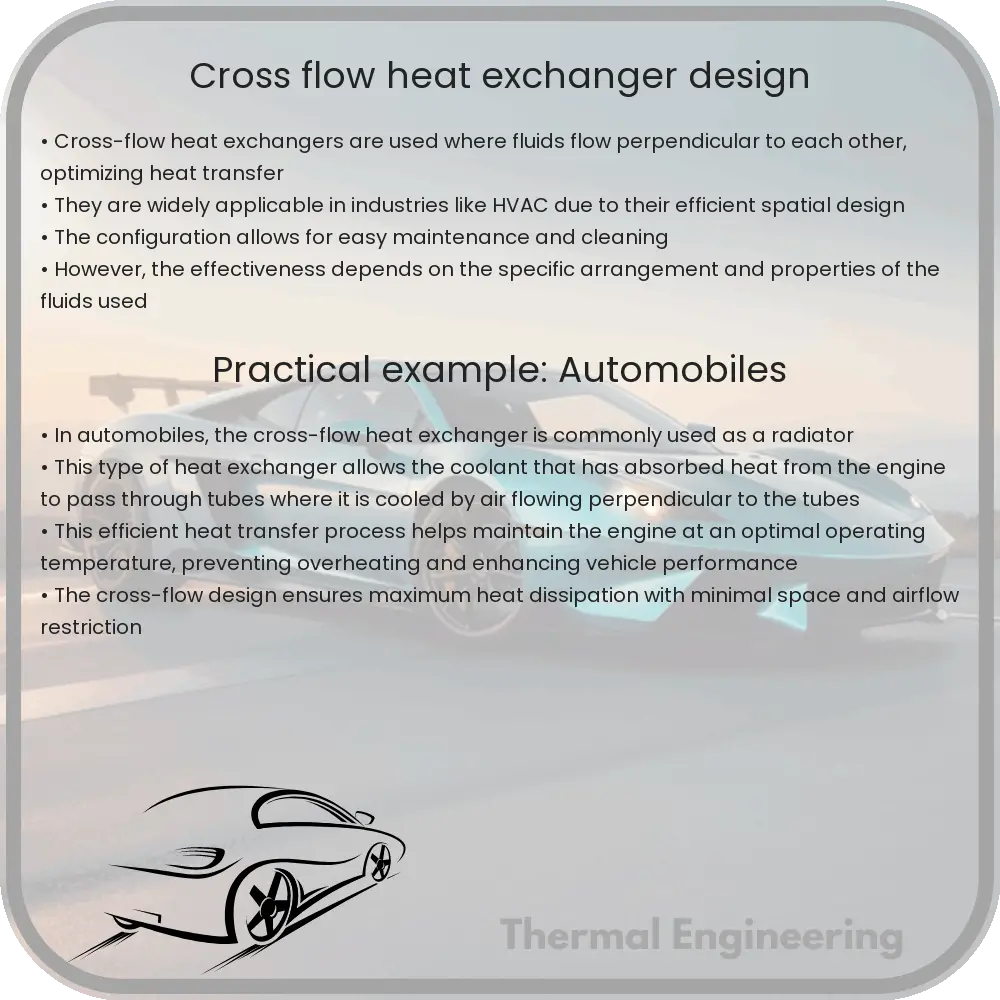Learn about cross-flow heat exchanger design, its components, efficiency, and applications in various industries.

Understanding Cross-Flow Heat Exchanger Design
Heat exchangers are vital components used in a variety of engineering applications to transfer heat between two or more fluids without them mixing. Among the various types of heat exchangers, the cross-flow heat exchanger is particularly noteworthy due to its efficiency and versatility. This article will explore the basic design principles of cross-flow heat exchangers and their practical applications.
What is a Cross-Flow Heat Exchanger?
In a cross-flow heat exchanger, the two fluids flow perpendicular to each other. One fluid flows through tubes, and the other passes outside these tubes at a 90-degree angle. This configuration can occur in one of two ways: either the fluids are both unmixed, or one fluid is mixed while the other remains unmixed. This arrangement is commonly employed in situations where space constraints exist, as it provides a compact solution for heat exchange.
Key Components and Design Considerations
- Tubes: The choice of material and size of the tubes is critical. Common materials include aluminum, copper, or stainless steel, chosen based on factors like thermal conductivity, corrosion resistance, and cost.
- Casing: This encloses the tubes to ensure that the second fluid flows over the tubes effectively. Like tubes, casings must also exhibit good thermal conductivity and durability.
- Fins: Often used in cross-flow heat exchangers, fins increase the surface area for heat transfer, improving the exchanger’s effectiveness. Fins can be attached to the tubes or the casing.
- Flow arrangement: The configuration of flows (i.e., whether one or both fluids are mixed) greatly influences the heat transfer efficiency and the exchanger design.
Thermal Design and Efficiency
The effectiveness of a cross-flow heat exchanger is highly dependent on its ability to transfer heat between the two fluids. The heat transfer can be described by the equation:
Q = U * A * ΔTlm
- Q is the total heat transfer rate,
- U is the overall heat transfer coefficient,
- A is the heat transfer surface area, and
- ΔTlm is the logarithmic mean temperature difference, calculated based on the inlet and outlet temperatures of the fluids.
To maximize efficiency, engineers must optimize each of these factors. For instance, increasing the surface area (A) by adding fins or choosing materials with a higher heat transfer coefficient (U) can enhance the heat transfer rate. Additionally, managing the flow rates and paths of the fluids can help achieve a more favorable ΔTlm, thereby improving the overall performance of the heat exchanger.
Applications of Cross-Flow Heat Exchangers
Cross-flow heat exchangers are used in a myriad of applications, including:
- Heating, Ventilation, and Air Conditioning (HVAC): Used in systems to effectively manage the temperatures of buildings and vehicles.
- Power plants: Utilized for cooling the working fluids used in power generation processes.
- Automotive industry: Employed for cooling internal combustion engines.
- Chemical processing: Necessary for controlling the temperature of chemical reactions, which can be crucial for reaction efficiency and safety.
In conclusion, the design of cross-flow heat exchangers is a sophisticated discipline combining materials science, fluid mechanics, and thermodynamics. By understanding and optimizing the key components and variables involved, engineers can facilitate more effective and efficient heat transfer in a wide range of industrial and commercial applications.